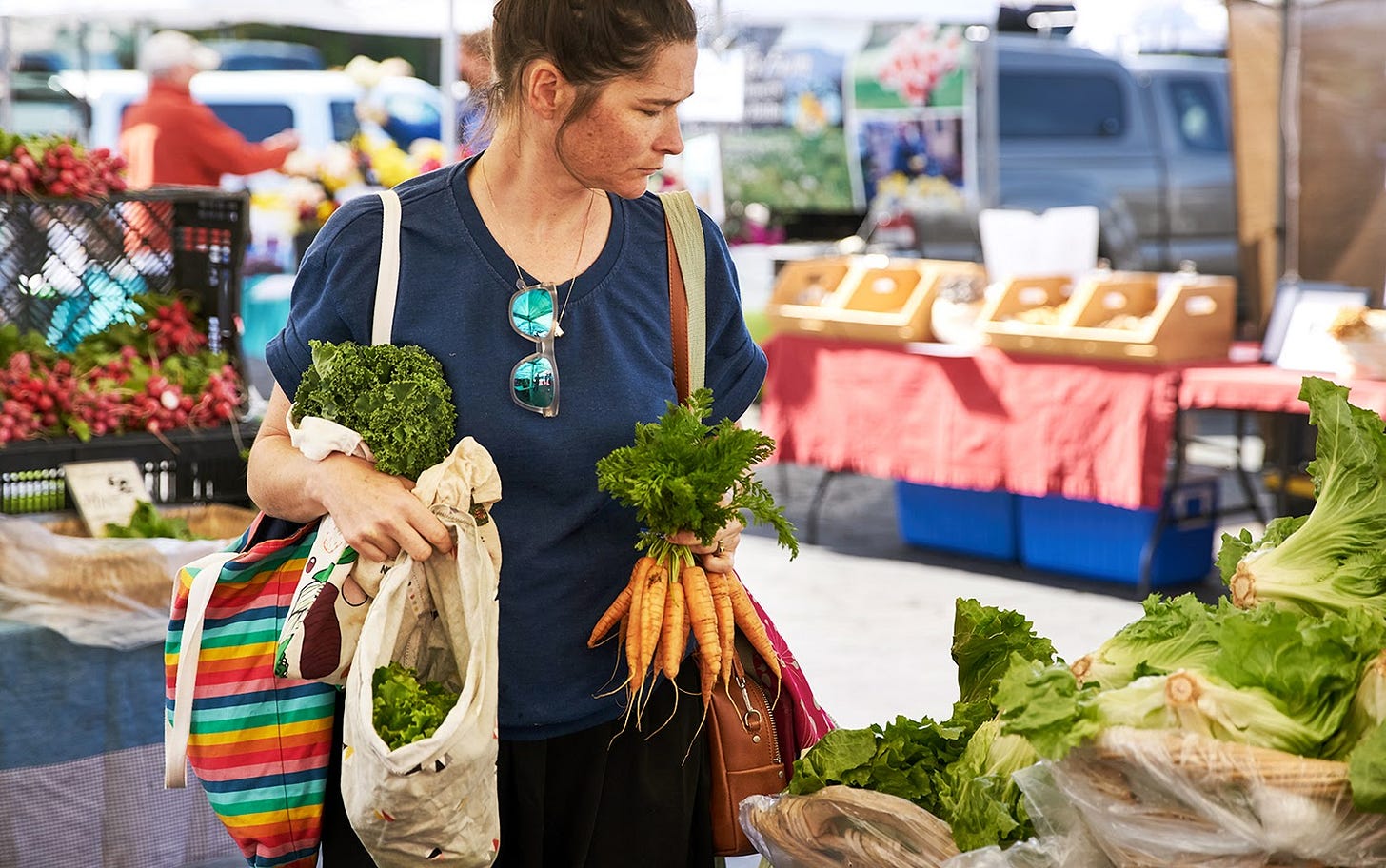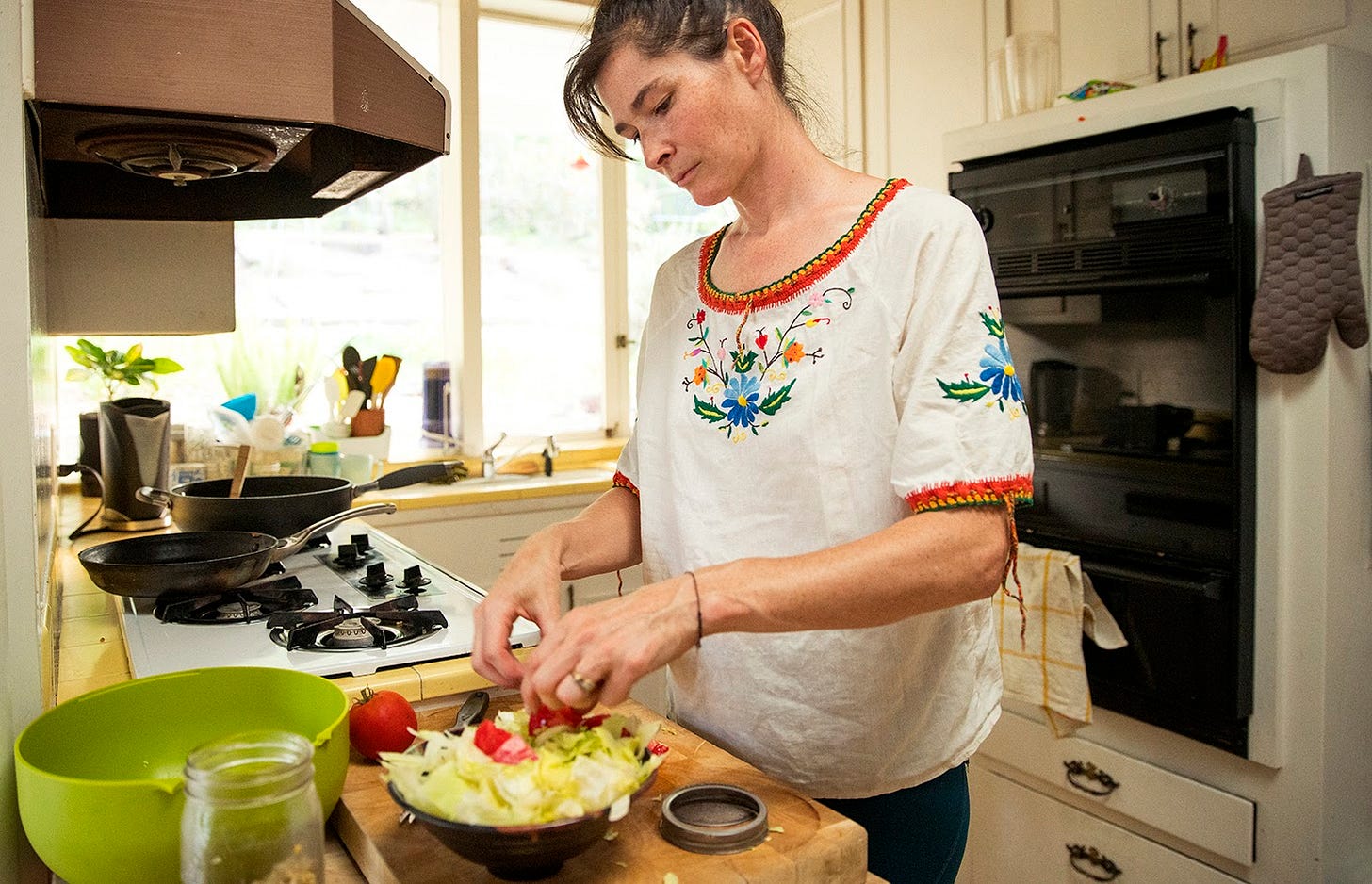Food waste accounts for three times more emissions than air travel
The developed world wastes a third of the food it produces. How can we fix an invisible problem?
Simple climate action at home // I S S U E 1 // F O O D W A S T E

Welcome to week one of the Hothouse food waste month
We’re going to explain the problem and explore some solutions. Next week, we’ll set a challenge to help cut your food waste at home. We ask for ten minutes of your time each week. Starting now…
By Jemima Kiss
I waste food, perfectly good food, every day. Sometimes it’s the kids’ leftovers, or I just make too much dinner and don’t fancy it later in the week. Sometimes I buy too much fruit and veg and can’t eat it in time. And sometimes we have lunch out, but can’t finish everything and it’s too sloppy to carry home. But it’s only a small amount of food each time. Surely it’s not that much of a problem?
Unfortunately, this kind of casual domestic food waste is exactly the problem. Food is incredibly resource intensive, generating greenhouse gas emissions at every stage of production and distribution — including potent emissions of methane from food dumped in landfill.
Food waste accounts for an estimated 6% of all global greenhouse gas emissions. In the developed world, 30-40% of food is wasted — and the US is the worst offender. America spends $144 billion on food that never gets eaten, and 43% of that food is wasted at home.
The problem is hard to tackle because it is invisible; we all waste small amounts of food at home, but together it adds up to a big problem. Where do we start?


Expert view: Dana Gunders on why we need to care about food waste
What is it about our buying and cooking habits that makes this problem so acute? Much of the problem is our cultural attitudes to food, says Dana Gunders, executive director of ReFED, a US non-profit to reduce food waste, and author of a landmark 2012 report on the topic. Gunders explained that a central issue is cheap food marketed for convenience, as well as the fact that everybody thinks food waste is someone else’s problem.
As told to Jemima Kiss. Edited for brevity and clarity.
We value choice, and being adventurous: People don’t want to make a commitment on Sunday for their dinner on Wednesday. We place a lot of value on being adventurous and trying new, aspirational things. Often that includes wanting to eat more healthily, so we’ll buy lots of fruit and salad. But then we get home and just want pasta again, or we’re hungry and want something more filling than salad. And so it goes off and we throw it out.

Dana Gunders, executive director of ReFED, with her impossibly small baguette. Image: ReFED
Food waste is invisible: People don’t think the problem applies to them: some 75% of Americans say they waste less than the average American. Our culture has become numb to throwing food away. If I walked down the sidewalk and threw half a sandwich on the ground, people would think I was crazy. But if I throw it out at home people, no-one knows. It’s also less acceptable to run out of food than it is to throw it away. So people overeat, overbuy, and throw food out.
Cheap food is part of the problem: In America, the average consumer wastes ten times more food than a consumer in Southeast Asia. In the grocery store, five to ten cents will sway someone from one brand or product to another — and yet at home that goes out of the window and they won’t think twice about throwing away a lump of cheese worth $1.50. Grocery stores also have low margins and want repeat customers, so they offer deals such as five avocados for $1. Customers buy them even if they don’t need all of them. And then they ripen quickly, and two will end up being thrown away.
We need far more efficiency in food production: We know consumers care, because of the interest in organic food, sustainable production and farmers’ markets. But it doesn’t matter how food is produced if it doesn’t get eaten. It’s just a terrible use of resources. By 2050, we’re going to need to produce 50% to 70% more food to feed a bigger population, and we’ll have to meet that demand with the same amount of resources.
Meal planning doesn’t work for everyone: Meal planning and doing regular food audits is the best way to avoid food waste, but planning only works for a certain type of person. There’s another type of person who’s less organized: what you have in mind for Wednesday night might not happen when you’re tired and one of your kids is sick. For some people, meal kits are convenient because they fit with our last-minute culture and can reduce food waste, but they are packaging intensive. For a younger generation, cooking seems antiquated and eating out is the norm, so the concept of meal planning and grocery shopping just don’t apply.
A few simple strategies can really help: I work, and have two kids aged two and four. That means less time to plan, shop or cook, but I try to do two small shops each week and don’t plan more than two to three days out. I get stressed out by a full fridge! A lot of the time the kids only eat half the meals I give them, so I eat their leftovers for lunch the next day. We cook a lot of the same things. I have staples like frozen shrimp that I keep in the freezer and throw into pasta with veg that needs using up. I lean heavily on frozen vegetables. They get a bad rap but are often more nutritionally dense because they’re frozen within hours of harvest. Our family isn’t perfect, but improving just a little bit can make a difference. Plus it can be fun to learn new tips and tricks.

The Hothouse Food Waste Challenge
Can you go one week without wasting anything at all? We’ll start next week, but for now you need to know what a typical week looks like.
Make a note of the food you throw away this week. Weight it, save it in a bowl, photograph it, or write down what you throw away. No judgment, but you might be surprised.
Ask a friend to join in for encouragement — forward them this email
Look out for full instructions in next week’s email


Challenge Diary: Recording how much food we waste
By Jemima Kiss
I thought our family of four didn’t waste much, but recording every scrap of food waste this week has been quite an eye opener.
Our kids sometimes refuse to eat certain things, or leave food on their plate, but I’ve realized how our disorganization causes waste too. I found a moldy bowl of Thai curry in the microwave that I’d forgotten about. We bought a large melon recently and waited a couple of days before opening it, at which point about half of it had become a weird gloop. We should've eaten it as soon as we got it home.
Some of our food waste is inedible, like avocado skins or teabags, but I’ve been saving and weighing everything in our green bowl and writing it on the list on our fridge. We usually fill this bowl about four times a week, and our weekly food waste weighs around 28 lbs or 12 kg.


Hothouse is a weekly climate action newsletter written and edited by Jemima Kiss, Mike Coren, and Jim Giles. We rely on readers to support us through subscriptions and donations. Everything we publish is free to read. Please forward this email to your friends.






Love this first newsletter. Good to find out I’m not the only one stressed out by a full fridge! Will start recording our waste today